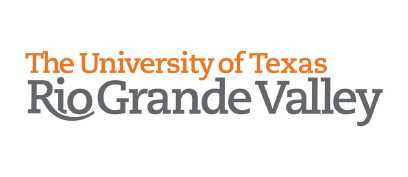EDINBURG — University of Texas Rio Grande Valley officials completed a tuition increase proposal to be presented to the UT Board of Regents next month. It will be the first to include additional charges for several majors mainly in the engineering and business departments.
If approved by the board, incoming undergraduates will see a $113 increase when enrolling for the fall 2018 semester, when compared to the 2016-2017 rates, totaling $3,909 per year and undergraduates entering in the fall of 2019 will see a total increase of $273, for a total of $4,069 annually.
The tuition plan continues to lock a rate for four years and cap it at 12 credit hours regardless of whether the student surpasses this number of hours. Because of the guarantees, this increase will not affect current students.
As proposed, increases will be greater for undergrads studying business, engineering, and communication disorders as the rates for courses in these fields will cost an additional $20 per credit hour. Graduates will also see the same additional fee in those same fields and also in physician assistant and occupational therapy programs.
“If you think about it, if it costs more for offering engineering, should we charge everybody for that or the engineering students?” asked UTRGV President Guy Bailey. “We have a base tuition but if you are in a more expensive program then there is an increment added … the faculty in business and in engineering, for example, cost much more.”
In general incoming graduate students’ tuition is expected increase by $85 in 2018 and $204 in 2019, also when compared to 2017 rates, totaling $3,445 per year this upcoming fall and $3,564 the following.
Undergraduate non-resident students will also see an increase of $113 for this year and $160 for the fall 2019, totaling $9,761 in 2018 and $9,921 in 2019. The same for incoming non-resident graduate students, who are slated to pay $6,955 in 2018 and $7,074 in 2019.
The school of medicine, which is only in its second year of existence, will remain the same at $18,298, as the program is expected to start producing some revenue. There is also too small of a student cohort to expect any impact out of a tuition increase, Bailey said, unless the price was doubled, which is also not an option.
This is the second time the university increases tuition costs since its launch in 2015. At the time UTRGV completely overhauled the former per-credit-hour system used at the University of Texas-Pan American and the University of Texas-Brownsville, making it a four-year guaranteed tuition and capping the price at 12 credit hours to allow students to take more hours at no cost.
After a $24.5 million reduction in state funding this year, Bailey said this increase intends to continue trying to supplement the demand in courses, transportation and retaining and recruiting faculty. As the cuts in statewide funding lured, the university implemented a soft-hiring freeze in the fall of 2016, which continues with prioritizing only necessary hires.
While the current and proposed tuition rates aim to incentivize four-year-graduations, university officials fear that having to be placed on a waiting list to take a course or not having enough seats to move students from campus to campus might deter some from graduating in that time.
“We have a lot of high demand courses and we need to be able to offer more courses to students,” Bailey said. “We can’t help students move forward to graduate unless we can offer the courses … one of the reasons we have students taking buses so much is that we can’t offer as large number of courses anywhere.”
About 45 percent of the additional revenue created by the tuition increase will go to retaining and recruiting faculty, Bailey said. That will help increase course offerings throughout the campuses and level or lessen the demand for transportation.
Part of the goal is to continue offering guaranteed tuition rates to encourage four-year graduations. Those who don’t finish their degree in the guaranteed time will have to register under the updated rates.
The system has shown results, Bailey said, as the university went from having only about 24 percent of students taking 15 credit-hours or more during its first year (2015-2016) to 36 percent today.
“This is what we want,” he said. “That’s why we have that 12 hour cap on tuition. We want to help students graduate and you help them graduate by encouraging them to take 15 hours or more per semester.”
A committee composed of university faculty, staff and student representatives began working on the proposal last fall, a task described by Bailey as one of the most challenging considering the local demographics do not leave enough room for drastic increases.
Once the UT Board of Regents is presented with the tuition in February, it can come back with suggestions before approving the tuition increase or even deny it. UTRGV officials expect an answer in late spring but for now, Bailey said this proposal has met the limitations he and other university officials are aware they have when trying to tailor tuition to the region.
“We asked for the minimum increase we could get,” he said. “We’ve tried to look at where we can put charges where the costs are, like in business and engineering … and then we’ve maintained all the guarantees in all the tuition structure.”





